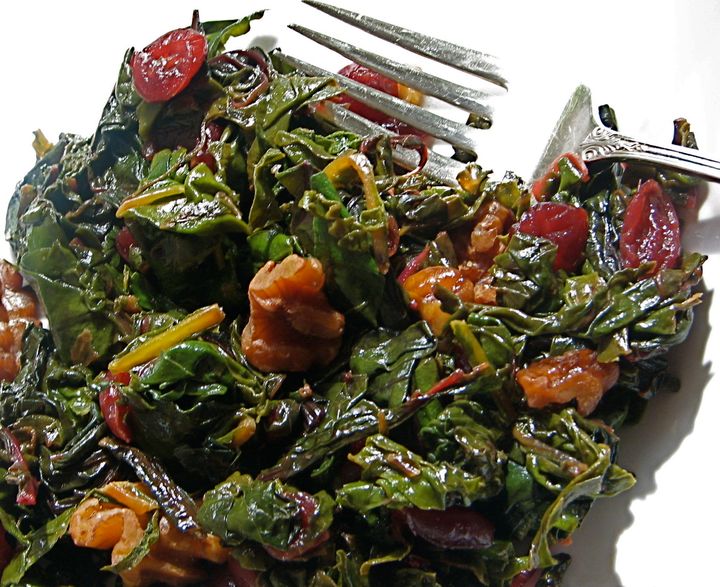
Sandy survivors, my heart goes out to you. As a Miamian, I know the heartache of hurricanes. Cold showers may be character-building, but you don't want more character (or cold water), you want your electricity back, you want your house back, you want your life back. The concept of Thanksgiving may ring a little hollow at the moment, as you're wondering just what to be thankful for.
The first Pilgrims probably felt much the same way. Back in England, they'd been merchants, artisans and land owners. In this wacky new world, they had nothing and no workable skill set.
Fortunately, the Wampanoag, Native Americans who'd been living in the 'hood, bailed them out. They gave these weird white people seeds for native crops like corns, beans and squash, and showed them how to plant and harvest them. For the first time, many Pilgrims had to connect to -- and depend on -- the land.
Plymouth suffered drought. The Pilgrims suffered doubt. And homesickness (oh, for the days of religious persecution, social infrastructure and a steady job). And sickness in general. So when harvest rolled around and they were still alive and discovered sustaining themselves might be possible, there was serious reason for gratitude. They planned a dinner party.
The Pilgrims were clear about who to invite -- everyone who'd survived, plus the Wampanoag, who'd helped save their collective ass. They were also clear about how to source their food. They went for seasonal and local. That's all they had. There was no running to the store. There was no store to run to. Likewise, no refrigerators, no food processors, no electricity. This may feel eerily familiar right now.
Before there were electric mixers and blenders, there were hands and spoons. If you don't have a blender (or power), pour your mixable liquid into a screw-top jar with a tight-fitting lid and shake the bejesus out of it. In lieu of a working food processor, crush cracker crumbs, nuts and things by pouring them in a resealable bag, pressing the air out of it and hammering it with a mallet a few times -- effective and a good aggression release, too.
When a hurricane -- or any life event -- knocks you on your ass, it forces you to do what you never take the time to do voluntarily -- reassess your priorities. Thanksgiving doesn't need to be elaborate. It doesn't need to be an eat-a-thon. It doesn't even need to involve turkey (the Pilgrims didn't have one). Thanks, though, should be on the menu even when, like the first wave of American settlers, we're struggling through tough times.
Thanksgiving is not just about food. It is a chance in our hectic lives to carve out a moment of grace with friends, family and perhaps another hurricane refugee or two. As I say in my book Feeding the Hungry Ghost: Life, Faith and What to Eat for Dinner, community and connection give food pleasure and depth and flavor as much as fresh ingredients and lavish spices. To miss that is to miss what we're really hungry for.
Make this Thanksgiving meal like the first Thanksgiving, seasonal, local, and prepared and shared with love and gratitude. Giving thanks, especially in the face of hardship, is humanizing, energizing -- and free. It requires no batteries, no generator, no power grid. You may not feel like breaking into the Hallelujah chorus, but take a breath and remind yourself you are okay. You are spared, saved. You've survived. In desperate times, that's a good first step. Happy Thanksgiving.
Thanksgiving Kale with Fennel, Cranberries and Walnuts (both cooked and raw versions)I love this kale dish, mellow with nuts and sherry, sparked with cranberries. I've had it on my Thanksgiving table for the past few years. It's easy and rewarding. I cook the kale, but in desperate times without electricity, you can make it raw. Yes, you can.
Moisten your hands with a little bit of olive oil and massage the torn kale leaves gently between your hands for just a moment or two. They will soften and wilt as though cooked. Slice fennel thinly, rather than chopping it and proceed with the sherry, pepper flakes cranberries and walnuts. You won't be able to toast them, but the world will continue to turn and you'll still have something awesome and elemental on your Thanksgiving table.
2 tablespoons olive oil
1 fennel bulb
2 pounds kale (roughly 8 cups, packed)
1/4 cup sherry
1 pinch red pepper flakes
1/3 cup dried cranberries
1/3 cup walnuts
sea salt and pepper to tasteHeat oil in a large pot over medium high heat.
Remove stalks and fronds from fennel. Chop fennel bulb into bite-sized cubes, roughly 1-1/2 inches. Add chopped fennel to pot and saute 10 minutes or until tender. Add kale by the handful, stirring gently until wilted, but still bright green, about 8 minutes. Stir in sherry, pepper flakes and cranberries.
Recipe may be made up to a day ahead at this point. Cover well and refrigerate. Return to room temperature before proceeding.
Preheat oven to 350.
Spread walnuts on a rimmed baking sheet. Toast for 10 minutes or until golden brown and fragrant. Remove from oven and chop walnuts coarsely.
To serve:
Gently reheat kale on stovetop over medium heat until heated through, about 8 minutes. Stir in walnuts. Add salt and pepper to taste.Makes 6 to 8 servings.
